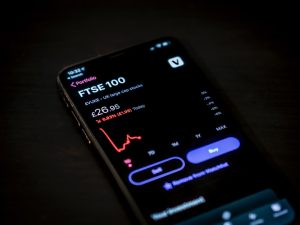Forex trading can be a lucrative way to make money, but it can also be a risky business. One of the most important things to remember when trading in the forex market is to have a good exit strategy. Scaling out of a trade is one such exit strategy that can help you minimize risks and maximize profits. In this article, we will explain what scaling out of a trade means, why it is important, and how to do it.
What is scaling out of a trade?
Scaling out of a trade is a process of taking partial profits from a trade. When you enter a trade, you have a target profit in mind. Scaling out of a trade means that you take some profits off the table as the trade moves in your favor, while letting the remaining portion of your trade run to your target profit level or beyond. This way, you are reducing your risk exposure while still keeping the potential to make more profits.
Why is scaling out of a trade important?
Scaling out of a trade is important because it helps you manage risk. Forex trading is a highly volatile market, and prices can move quickly in either direction. If you wait too long to take profits, you run the risk of losing all the profits you have made so far, or even worse, losing your entire investment. Scaling out of a trade reduces your risk exposure by allowing you to take profits as the trade moves in your favor, thus locking in some of your gains.
How to scale out of a trade?
Scaling out of a trade is a simple process that involves taking partial profits at different price levels. Here are the steps to scale out of a trade:
1. Determine your initial target profit level: Before entering a trade, you should have a clear idea of your target profit level. This is the level at which you would like to exit the trade with your full profit.
2. Set your scaling-out levels: Once you have entered a trade, you should set your scaling-out levels. These are the price levels at which you will take partial profits. There is no fixed rule on how many scaling-out levels you should set, but it’s recommended to have at least three levels.
3. Take partial profits at each scaling-out level: As the trade moves in your favor, you should take partial profits at each scaling-out level. For example, if you have set three scaling-out levels, you should take one-third of your position off the table at each level.
4. Adjust your stop loss: As you take partial profits, you should adjust your stop loss to lock in your gains. For example, if you have taken one-third of your position off the table, you should move your stop loss to breakeven (the price at which you entered the trade) for the remaining two-thirds of your position.
5. Let the remaining portion run: After you have taken partial profits at each scaling-out level, you should let the remaining portion of your position run to your initial target profit level or beyond. This way, you are still keeping the potential to make more profits, while reducing your risk exposure.
Conclusion:
Scaling out of a trade is a simple yet effective way to manage risk and maximize profits in forex trading. By taking partial profits at different price levels, you are reducing your risk exposure while still keeping the potential to make more profits. However, it’s important to remember that scaling out of a trade requires discipline and patience. You need to have a clear exit strategy in mind and stick to it, even if the trade moves against you. With practice and experience, scaling out of a trade can become a valuable tool in your forex trading arsenal.





